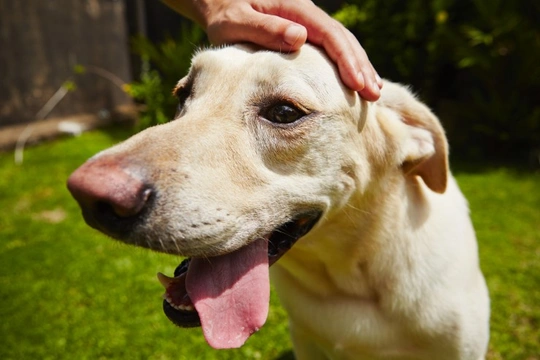
Five things that dog lovers do that drive dogs mad
People who like dogs tend to go out of their way to meet and interact with as many dogs as they can, and we all know how much it can brighten your day to make a new canine pal who was as delighted to meet you as you were to meet them!
Speaking encouragingly, crouching down and allowing a new dog to sniff you before greeting are all good ways to open a positive meeting and make a dog feel positive about you and receptive to saying hello, but there are also a wide range of other human greetings and cues that most humans use without thinking, but that can be annoying or even confusing for dogs.
In this article, we will look at five common behaviours that dog lovers often exhibit around dogs-particularly dogs that they don’t know-that confuse dogs, or otherwise make a first meeting tenser or more of a challenge for the dog than it would otherwise be.
Read on to learn about five common human behaviours that drive dogs mad!
Using too many verbal cues
Dogs are very adept at picking up on people’s tone of voice, and dogs can tell immediately from the way that you speak to them and around them if you are encouraging and welcoming, tense, angry, or want to be left alone.
Talking to a strange dog to encourage them to come closer and feel safe is a great way to get a dog used to you and encourage them to feel at ease with you-but communicating with a dog verbally has significant limitations that humans often overlook.
For dogs, they will read and interpret the cues given by your body language first and your voice secondly-if your body language is tense or fraught but you’re speaking softly, the dog won’t be fooled!
It is great to speak to a dog encouragingly, but remember that other than perhaps their own name, the name of commands and other cue words such as “food” or “walk,” the dog won’t understand what you are saying, so telling them to come closer or stand beside you will be lost on them! Pay more attention to your non-verbal communications instead, and you will send a much clearer message.
Standing over the dog
When a dog is approaching or you wish to let a dog know that you are not a threat to them, it is normal to crouch down, so that you can meet the dog at eye level and also, reduce the size of your profile so that you are not towering over them.
This is a good idea, because some dogs that are a little shy or nervous or particularly small are apt to keep a safe distance from you until they get to know you-generally, shy dogs that don’t know you will avoid coming within the same distance of you as you are tall. This means that if you are standing up, the dog will probably keep your height’s distance back, and if you are crouching, they will come a little closer.
Standing (or even bending) right over a dog so that they are underneath your profile indicates dominance to a dog, which can make them feel a little unnerved if they do not know you.
Patting the head and face
All dogs have different preferences in terms of where they like to be petted, how hard and with what sort of motion-but one thing that virtually all dogs have in common is that they do not like to be patted on the top of the head or the face. Even if you do this very gently, think about how you would be likely to wince or flinch if someone started lightly slapping the top of your head or your face, and think of how this comes across to the dog!
Restrict contact on the head and face to stroking, keeping your hand in the dog’s line of sight until you are sure that they are happy with you.
Gazing into the dog’s eyes
Making direct eye contact might be considered to be polite and a sign of honesty in terms of communication between people, but eye contact is read very differently by dogs. As well as being used to see, the eyes of the dog are one of their most important communication tools, and whether their gaze is cast up or down, focused or still, it is loaded with meaning.
A direct gaze between dogs usually indicates a battle for dominance, and one dog will be expected to look away to keep things friendly, essentially yielding the alpha role to the other party-and the same is true for your dog when communicating with people too.
Looking straight into a dog’s eyes is not a sign of love to a dog-it is the sign of dominance or a challenge!
Hugging
Finally, meeting a new dog that comes right up to you and even leans on you or otherwise wants to get as close as possible can be very rewarding, but stick to patting or stroking them and don’t try to hug them to you.
Hugging to dogs is not the type of affectionate gesture that it is between people-it combines elements of both restriction and dominance, and will not be read by your dog as a positive thing.



